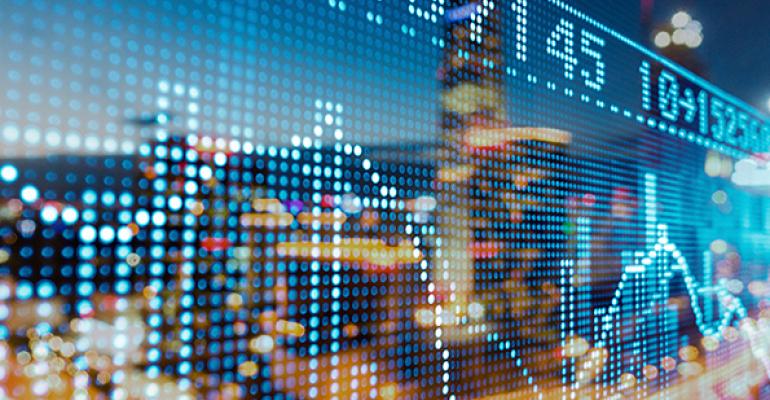Investors continue to exhibit a healthy appetite for commercial real estate. But deciding where to place and source capital is becoming a lot trickier amid recent volatility in capital markets and signs of slowing growth ahead.

To help investor navigate the current volatility, CBRE is taking an in-depth look at issues impacting global capital markets in it’s new Thought Series - Leading Global Capital in a Time of Uncertainty – including the micro-level factors contributing to uncertainty in today’s global markets. The first piece in the series, Volatility: The Near-Term Normal?, explores the challenges and opportunities those conditions are likely to create within the commercial real estate market. “The real key here is that most investors are maintaining their confidence in 2016, notwithstanding the volatility in the global market,” says Spencer Levy, CBRE’s Americas Head of Research. In fact, volatility is likely to drive even more demand for commercial real estate in stable markets such as the U.S. as investors look for “safe harbors” for capital, adds Levy.
Global commercial property investment reached $876 billion last year, and CBRE is forecasting that there is more than $1.1 trillion in global capital targeting real estate investment in 2016. Yet investors were clearly skittish in first quarter due to worries about slowing growth in China, falling oil prices, changes in central bank policies and geopolitical instability. That nervousness was evident in the radical moves that occurred in financial markets. For example, both the Dow Jones Industrial Index and the FTSE 100 saw swings in gains and losses of up to 5 percent in one day.
Concerns were magnified by weakness in U.S. manufacturing due to a strong U.S. dollar; uncertainty related to the direction of Fed policy regarding interest rates; and apprehension that the six-plus-year real estate recovery cycle was nearing its end. That volatility did spill over to impact commercial real estate. Preliminary first quarter numbers on deal flow indicates a modest slowdown from 2015.
However, that is likely a temporary dip in deal flow. CBRE’s most recent Global Investor Intentions Survey, which polled more than 1,200 investors in January and early February 2016, found that the majority of investors are planning to stay the course. Eighty percent of those surveyed said that their pipelines will be at least as good or better in 2016 compared to last year. Outbound investment from Asia will remain particularly strong, while owners exposed to the energy and commodities downdraft may sell some assets.
The big question ahead is how the volatility coupled with slowing growth in real estate markets will influence investment strategies, yield expectations, property values and pricing. Although investors remain confident, they are moving forward cautiously, says Levy. Investors and owners are asking more questions. They are absorbing more data, and they want more comfort to get to a decision. As a result, bid flow is easing from the record levels seen in 2015. While investor strategies vary widely depending on the individual entity, CBRE’s Thought Piece – Volatility: The Near-Term Normal? highlights a number of key themes that will continue to drive global real estate investment sales in the near term.
Maintain a strong defense. Although global capital continues to look at all asset classes, there continues to be big demand for safety. For example, 65 percent of global investors expect to buy more assets in the Americas in 2016 than they bought last year, according to the CBRE survey. In particular, institutions will continue to target core assets with long-term leases, quality tenants and reliable cash flows located in gateways of North America and Europe.
Don’t overreact. The combination of a global economy and digital era has created a hyper-connected marketplace. When a tree falls in China, the whole world hears it. Connectedness is increasing the correlation of global capital markets, as well as amplifying the potential for dramatic swings. Investors are looking everywhere for clues about the market’s direction, and these indicators—either positive or negative—can cause overreactions in the markets.
Reset expectations. Interest rates are expected to edge up. Although many investors have priced this into their assumptions, buyers are less confident on capitalization rates. Institutional investors in particular are being more conservative in their underwriting given that growth and global volatility will impact the certainty of their returns. That may result in a subtle pullback in pricing.
“The key for investors in markets like this is to look at the long-term investment goals of their capital,” states Chris Ludeman, CBRE’s Global President of Capital Markets. Levy adds, “Very often people succumb to what I call short-termism, even when the long-term prospects of a market or an asset type are excellent. So, while we have to be cycle aware, we try to council people to not just look through the prism of what’s happening today, but what is likely to happen over the next, three, five or seven years depending on their investment horizon.”
To learn more about navigating today’s global capital markets, visit CBRE.com/GlobalCapital
CBRE has launched a three-part Thought Series on “Leading Global Capital in a Time of Uncertainty”. The series provides insight on the shifting market dynamics to help investors make thoughtful decisions for both near- and long-term real estate investing strategies. The first brief in the series “Volatility: The Near-term Normal?” takes an in-depth look at the drivers of volatility in today’s global markets and their implications for commercial real estate investors and owners around the world.
Click here to access a full copy of the report.

